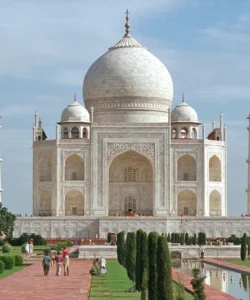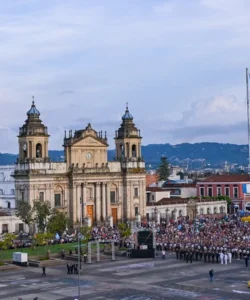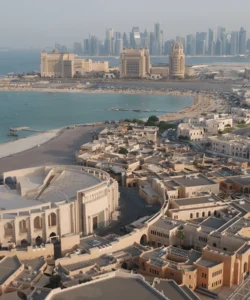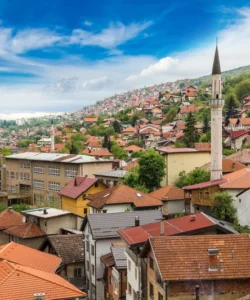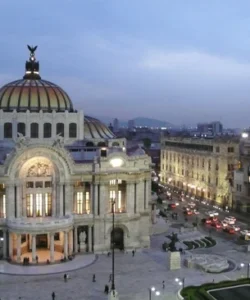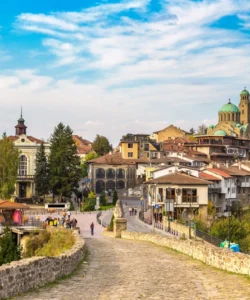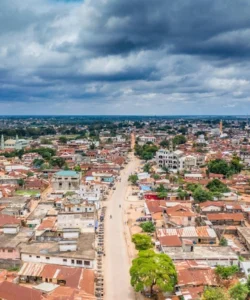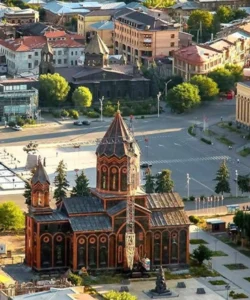Moldova, officially the Republic of Moldova, is a landlocked country in Eastern Europe. It is bordered by Romania to the west and Ukraine to the north, east, and south. Moldova is known for its beautiful rolling hills, extensive vineyards, and a rich cultural heritage shaped by various historical influences.
![]()
Area: Approximately 33,846 square kilometers (13,068 sq mi).
Population: As of 2023, the population is estimated at around 2.5 million.
Language: The official language is Romanian (often referred to as Moldovan within Moldova, though linguistically identical). Russian is also widely spoken, especially in urban areas and among the older generation, and Ukrainian and Gagauz (a Turkic language) are spoken by minorities. English is increasingly understood, particularly by younger people and in tourist areas.
Currency: The official currency is the Moldovan Leu (MDL).
Religion: The predominant religion in Moldova is Eastern Orthodoxy, with the vast majority of the population belonging to the Moldovan Orthodox Church (under the Russian Orthodox Church) or the Metropolis of Bessarabia (under the Romanian Orthodox Church). There are also smaller communities of other Christian denominations and other faiths.
Capital: Chișinău is the capital and largest city of Moldova. It’s a green city with numerous parks and boulevards, characterized by Soviet-era architecture interspersed with older buildings.
Major Cities: Besides Chișinău, other significant cities include Tiraspol (in the breakaway region of Transnistria), Bălți, Bender (Tighina, also in Transnistria), and Comrat (capital of Gagauzia).
Attractions & Wonders: Moldova’s attractions primarily revolve around its wine industry, monasteries, and natural landscapes:
- Orheiul Vechi (Old Orhei): A stunning archaeological and historical complex, a UNESCO World Heritage Tentative Site. It features a cave monastery carved into limestone cliffs, ruins of ancient fortifications, and panoramic views of the Răut River valley. It offers a glimpse into different civilizations that inhabited the area.
- Wineries and Vineyards: Moldova is a major wine-producing country with a long viticultural tradition.
- Cricova Winery: One of the largest underground wine cellars in the world, a “wine city” with streets named after grape varieties. Offers tours and wine tastings.
- Mimi Castle (Castel Mimi): A beautifully restored winery and architectural monument, offering wine tours, tastings, and a boutique hotel.
- Mileștii Mici Quality Wines Industrial Complex: Another vast underground wine cellar, holding the world’s largest wine collection according to Guinness World Records.
- Purcari Winery: Known for its legendary wines, particularly “Negru de Purcari.”
- Chișinău: Explore the Central Park (Stefan cel Mare Park), the Triumphal Arch, the Nativity Cathedral, and various museums like the National Museum of History of Moldova.
- Transnistria: A self-proclaimed, unrecognized state on the eastern bank of the Dniester River. Visiting Tiraspol, its capital, offers a unique “time capsule” experience with Soviet symbols and statues still prominent.
- Căpriana Monastery: One of Moldova’s oldest monasteries, with a beautiful church and peaceful surroundings.
- Tipova Monastery: A picturesque cave monastery carved into cliffs overlooking the Dniester River, one of the largest in Eastern Europe.
- Codrii Natural Reserve: One of Moldova’s oldest scientific reserves, protecting diverse forest ecosystems.
- Soroca Fortress: A well-preserved medieval fortress on the Dniester River, with a rich history and a circular design.
Architecture: Moldovan architecture reflects its historical influences from various empires and periods:
- Medieval: Evident in the fortifications like Soroca Fortress and the remnants of the Orheiul Vechi complex.
- Monastic: Stone monasteries and cave monasteries showcase a distinct religious architectural style.
- Neoclassical: Prominent in 19th-century public buildings and some residential areas, especially in Chișinău.
- Soviet Era: A significant portion of Chișinău and other urban centers feature utilitarian Soviet-era apartment blocks, public buildings, and wide boulevards.
- Vernacular: Traditional Moldovan village houses often feature simple, practical designs, using local materials.
- Contemporary: Newer buildings often blend modern designs with elements of traditional Moldovan aesthetics.
Roads: Moldova’s road infrastructure is generally less developed compared to Western European standards, though improvements are ongoing. Major roads connecting Chișinău to other large cities are relatively well-maintained, but many secondary and rural roads can be in poor condition with potholes. Driving outside of major urban areas requires caution.
Hotels: Accommodation options in Moldova are concentrated in Chișinău, where you’ll find a range of hotels from international chains (e.g., Radisson Blu) to smaller local hotels and guesthouses. Outside the capital, options are more limited but include local guesthouses, particularly near popular attractions like Orheiul Vechi and at some wineries (e.g., Mimi Castle). Rural tourism and agritourism are developing, offering authentic local experiences.
Restaurants: Moldovan cuisine is hearty and flavorful, with strong influences from Romanian, Ukrainian, Russian, and Turkish culinary traditions. It features ingredients like corn, various meats (pork, chicken, lamb), vegetables, and dairy products.
- Chișinău offers a good selection of restaurants serving traditional Moldovan dishes, as well as international cuisine.
- Traditional Moldovan Dishes:
- Mămăligă: A staple, a thick cornmeal porridge similar to polenta, often served with tocană (meat stew), cheese (brânză), sour cream (smântână), or jumări (fried bacon bits).
- Sarmale: Cabbage rolls filled with minced meat and rice, simmered in a savory sauce.
- Mici (Mititei): Grilled skinless sausages made from ground meat (usually a mix of beef and pork), popular as street food.
- Plăcinte: Traditional pastries, either savory (filled with cheese, cabbage, potatoes, meat) or sweet (with apples, cherries, cottage cheese).
- Zama: A traditional sour soup, often made with chicken, noodles, and fermented bran for a distinct sour taste.
- Fasole bătută: Mashed beans with garlic.
- Wine: Moldova is famous for its wines, with red, white, and sparkling varieties produced. Wine tasting is a must-do activity.
- Divin: Moldovan brandy, a popular alcoholic beverage.
- Fresh fruits and vegetables are abundant and seasonal.
- Desserts often include sweet pastries and fruit-based dishes.

